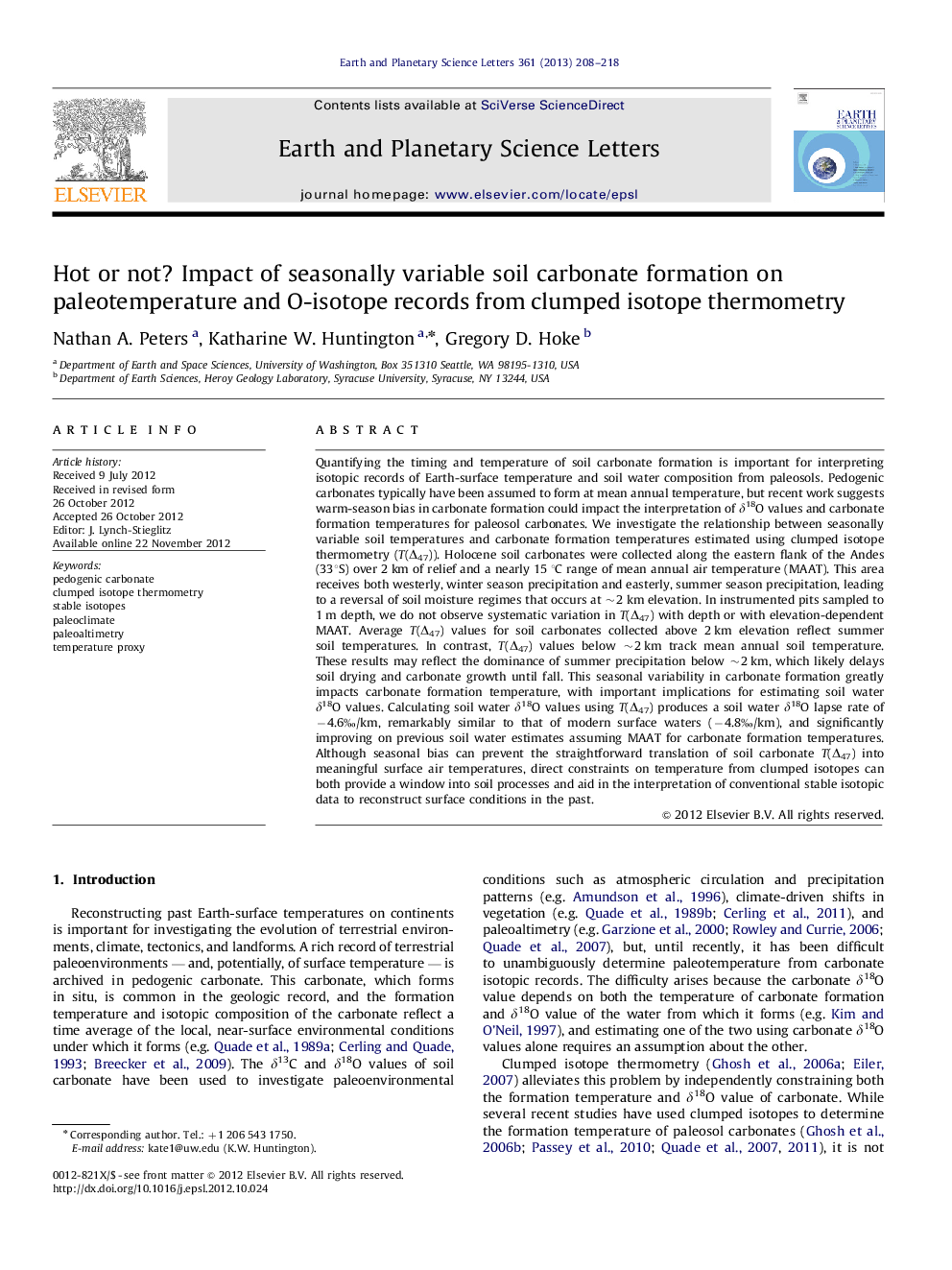| کد مقاله | کد نشریه | سال انتشار | مقاله انگلیسی | نسخه تمام متن |
|---|---|---|---|---|
| 4677174 | 1634792 | 2013 | 11 صفحه PDF | دانلود رایگان |

Quantifying the timing and temperature of soil carbonate formation is important for interpreting isotopic records of Earth-surface temperature and soil water composition from paleosols. Pedogenic carbonates typically have been assumed to form at mean annual temperature, but recent work suggests warm-season bias in carbonate formation could impact the interpretation of δ18O values and carbonate formation temperatures for paleosol carbonates. We investigate the relationship between seasonally variable soil temperatures and carbonate formation temperatures estimated using clumped isotope thermometry (T(Δ47)). Holocene soil carbonates were collected along the eastern flank of the Andes (33°S) over 2 km of relief and a nearly 15 °C range of mean annual air temperature (MAAT). This area receives both westerly, winter season precipitation and easterly, summer season precipitation, leading to a reversal of soil moisture regimes that occurs at ∼2 km elevation. In instrumented pits sampled to 1 m depth, we do not observe systematic variation in T(Δ47) with depth or with elevation-dependent MAAT. Average T(Δ47) values for soil carbonates collected above 2 km elevation reflect summer soil temperatures. In contrast, T(Δ47) values below ∼2 km track mean annual soil temperature. These results may reflect the dominance of summer precipitation below ∼2 km, which likely delays soil drying and carbonate growth until fall. This seasonal variability in carbonate formation greatly impacts carbonate formation temperature, with important implications for estimating soil water δ18O values. Calculating soil water δ18O values using T(Δ47) produces a soil water δ18O lapse rate of −4.6‰/km, remarkably similar to that of modern surface waters (−4.8‰/km), and significantly improving on previous soil water estimates assuming MAAT for carbonate formation temperatures. Although seasonal bias can prevent the straightforward translation of soil carbonate T(Δ47) into meaningful surface air temperatures, direct constraints on temperature from clumped isotopes can both provide a window into soil processes and aid in the interpretation of conventional stable isotopic data to reconstruct surface conditions in the past.
► We report new clumped isotope thermometry data for Holocene pedogenic carbonates.
► Andean transect spans >2 km relief and both winter- and summer-precipitation zones.
► Soil carbonates from winter-precipitation zone record summer soil temperatures.
► Carbonates form closer to mean annual soil temperature where summers are wet.
► Soil water δ18O values calculated using T(Δ47) reflect modern river water δ18O.
Journal: Earth and Planetary Science Letters - Volume 361, 1 January 2013, Pages 208–218